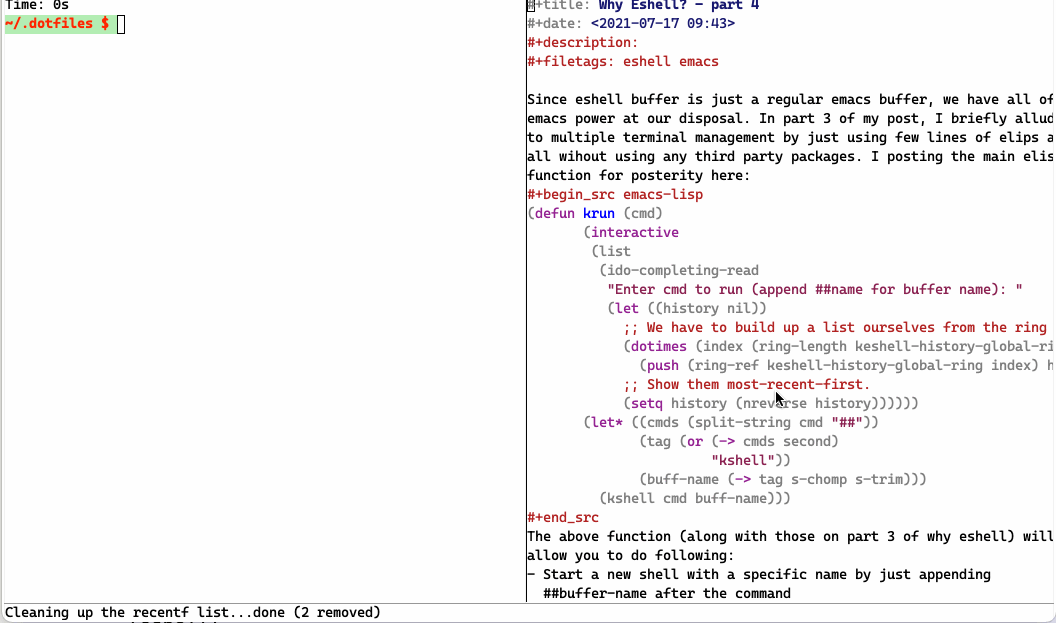17 Jul 2021
Why Eshell? - part 4
Since eshell buffer is just a regular emacs buffer, we have all of the emacs power at our disposal. In part 3 of my post, I briefly alluded to multiple terminal management by just using few lines of elisp and all without using any third party packages. I am posting the main elisp function for posterity here:
(defun krun (cmd)
(interactive
(list
(ido-completing-read
"Enter cmd to run (append ##name for buffer name): "
(let ((history nil))
;; We have to build up a list ourselves from the ring vector.
(dotimes (index (ring-length keshell-history-global-ring))
(push (ring-ref keshell-history-global-ring index) history))
;; Show them most-recent-first.
(setq history (nreverse history))))))
(let* ((cmds (split-string cmd "##"))
(tag (or (-> cmds second)
"kshell"))
(buff-name (-> tag s-chomp s-trim)))
(kshell cmd buff-name)))
The above function (along with those from the previous post) will allow you to do following:
- Start a new shell with a specific name by just appending ##buffer-name after the command
- Run a command from history or new command in a dedicated eshell buffer, which defaults to kshell. You can override as any name you want.
- Use all hotkeys, interactive lisp functions as you would for regular emacs buffer. For example, you can do buffer switching, ibuffer management, isearch, protect a buffer from being killed, etc.
Following demonstrates above cases I am talking about:
